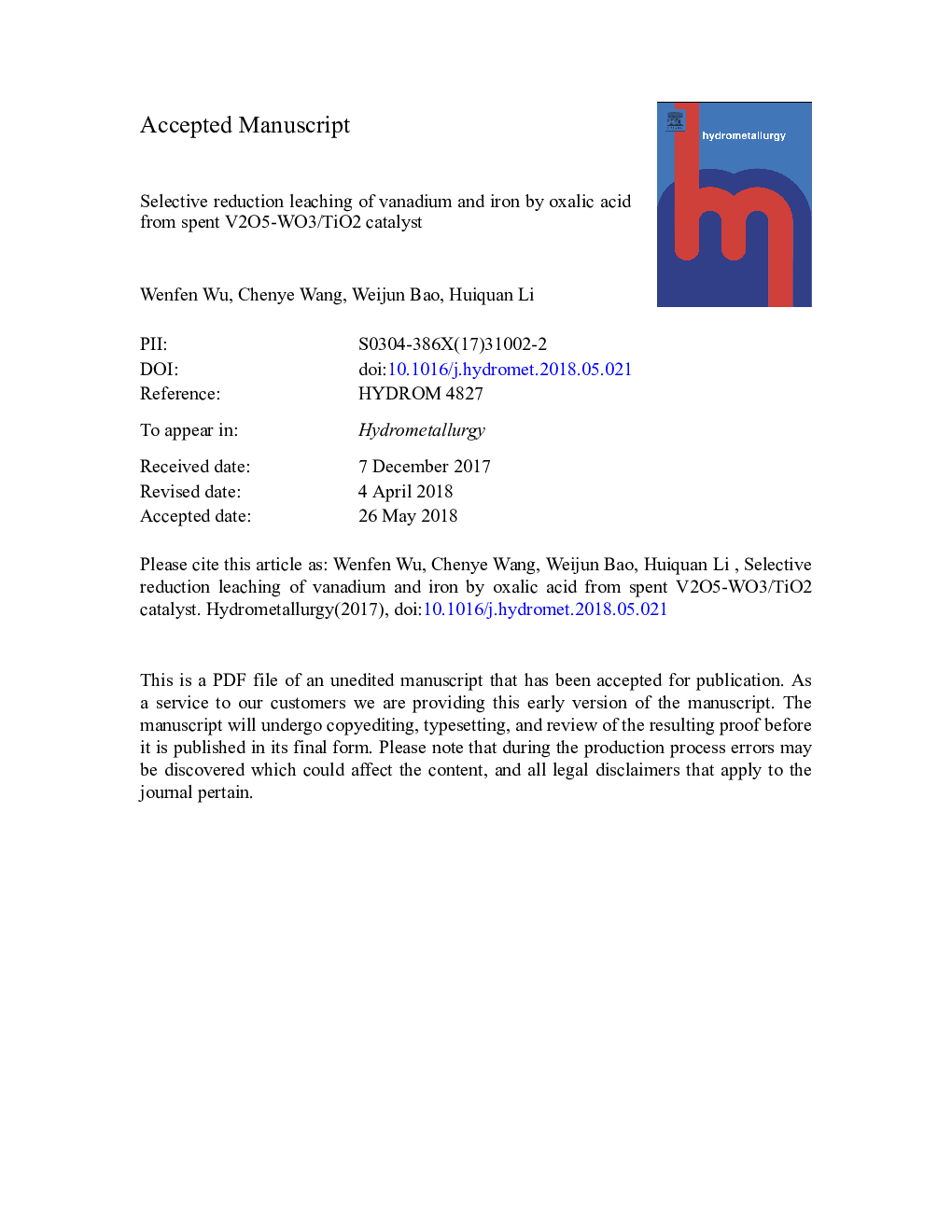| Article ID | Journal | Published Year | Pages | File Type |
|---|---|---|---|---|
| 6658846 | Hydrometallurgy | 2018 | 35 Pages |
Abstract
Large amounts of selective catalytic reduction (SCR) denitrification catalysts with poor mechanical property are disposed and difficult to be regenerated, resulting in environmental pollution. For spent SCR denitrification catalyst, the ratio of V4+/V5+ decreased by about 45% and Fe impurity increased >10 times, which influenced the recycling of the supporter. Selective leaching of V and Fe by oxalic acid and its reaction mechanism were investigated. Under the optimized leaching condition: oxalic acid concentration of 1.0â¯mol/L, reaction temperature of 90â¯Â°C, liquid-to-solid ratio of 20â¯mL/g, <75â¯Î¼m particle size and leaching time of 180â¯min, the leaching efficiencies of V and Fe reached over 84% and 96%, respectively. The reaction mechanism for the selective leaching of these metals was determined through UV-VIS spectrophotometry and CO2 emission analyses. After dissolution and complexation, VO2+ and Fe3+ were reduced to water-soluble cations VO2+ and Fe2+. When V and Fe was in the specific forms of VOC2O4 and Fe(C2O4)22â at 0.33 pH, high leaching efficiency was obtained. It indicated that redox reactions led to the broken of dissolution and complexation equilibriums for VO2+, VO+ and Fe3+. For W and Ti, only dissolution and complexation reactions occurred and the leaching efficiency was limited by the solubility. The leaching residue with anatase TiO2 was recovered as carrier and used for synthesis of a new SCR catalyst.
Keywords
Related Topics
Physical Sciences and Engineering
Chemical Engineering
Chemical Engineering (General)
Authors
Wenfen Wu, Chenye Wang, Weijun Bao, Huiquan Li,
